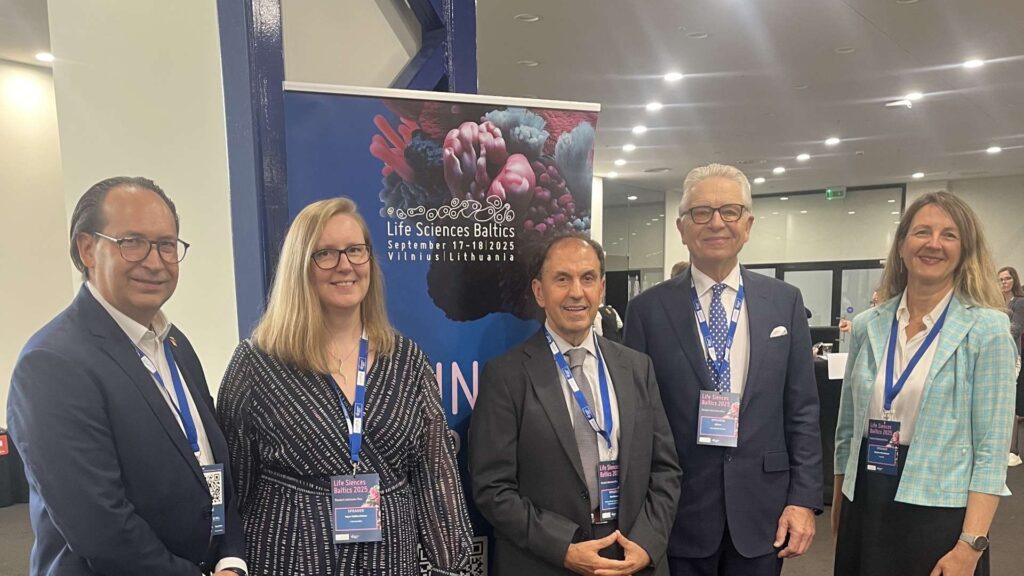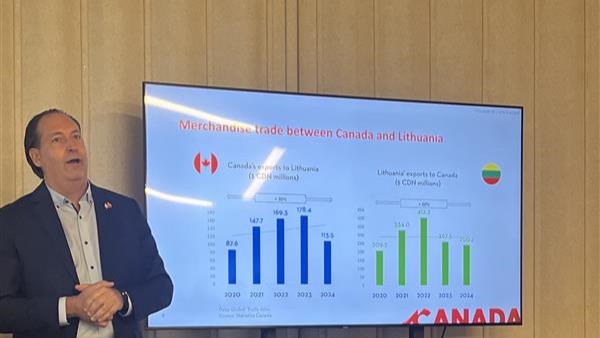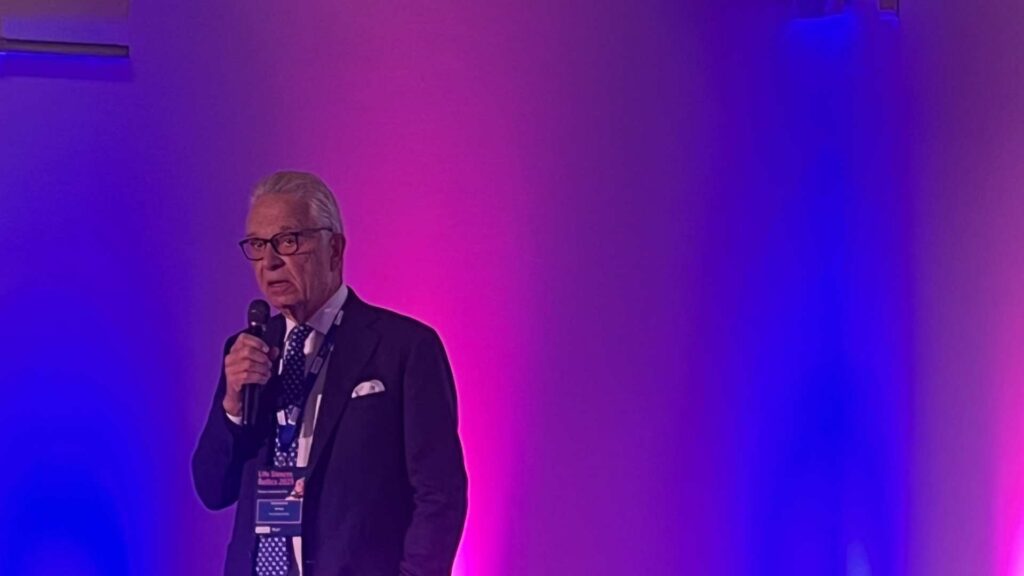
The Canada–Lithuania Chamber of Commerce spent the past week on the ground in Vilnius to deepen ties across government, industry, and the innovation ecosystem. Representing the Chamber, Al Pace and Nick Simone met with public- and private-sector leaders, participated in conference programming, and sat down with companies exploring growth in Canada. The through line across every conversation was clear: there is real appetite—and a practical path—for Canada–Lithuania collaboration in life sciences, advanced technology, and globally scalable services.
Our visit began with a briefing and meetings facilitated by Invest Lithuania, which provided a detailed overview of Lithuania’s strengths: an agile R&D environment, a coordinated approach to investment attraction, and a tech‑savvy talent base. These sessions were substantive, data‑driven, and solution‑oriented—exactly the tone required for cross‑border business building.
A meeting with Lukas Savickas, Minister of the Economy and Innovation of Lithuania, reinforced that tone. Discussion focused on tangible ways to accelerate two‑way trade and investment: streamlining information flows for prospective investors, identifying priority sub‑sectors where Canadian and Lithuanian firms can co‑develop solutions, and showcasing commercial wins that inspire others to follow. From our perspective, these public‑sector touchpoints matter. They give companies the confidence that both jurisdictions are aligned on competitiveness, regulatory transparency, and the value of international collaboration.

Lithuania’s life sciences cluster is growing quickly, and our week coincided with Life Sciences Baltics 2025. On the Insights Stage, Al Pace and Nick Simone joined Nicolas Lepage (Embassy of Canada) and Lithuanian industry leaders for a session titled “Expanding Transatlantic Connections: Opportunities for Canada–Lithuania Life Sciences Collaboration.” The conversation highlighted three practical opportunities:
We also joined a Vilnius Chamber session on Canadian trade, innovation, and investment where the room’s questions were pointed and practical—from regulatory expectations to timelines for scaling. The takeaway: companies on both sides are looking for credible, step‑by‑step routes into new markets, not just high‑level aspiration.
Transatlantic cooperation only becomes real when companies decide to act. Throughout the week, we met organizations at different stages of their Canada strategy:
Across these conversations, two common threads emerged. First, Canada is seen as a stable, innovative, and strategically valuable market—not just for revenue, but for learning and co‑development. Second, success depends on credible local partnerships and practical road‑mapping: who to meet, what milestones to hit, and how to manage risk while moving quickly.

Over dozens of interactions, we consistently heard the same needs from Lithuanian and Canadian stakeholders:
These are exactly the gaps a bilateral chamber is designed to close.
We exist to make cross‑border business easier. Our work in Vilnius focused on three verbs:
This week confirmed that both ecosystems are ready to move. Lithuania brings focused strengths in life sciences, data‑driven health, and high‑value manufacturing, alongside a responsive public sector. Canada brings market scale, capital, and deep sector experience across biotech, medtech, AI‑enabled health, and connectivity/IoT. Put together—and supported by targeted introductions and practical guidance—the opportunity set is compelling.

Following this visit, we will:
We welcome member ideas for topics and hosts on both sides of the Atlantic.
Our thanks to the Ministry of the Economy and Innovation of Lithuania, Invest Lithuania, Life Sciences Baltics, Vilnius Chamber, and the company teams who shared their time and insight. Special appreciation to our hosts and everyone who contributed to open, practical discussions throughout the week.
If your organization is exploring trade, investment, or partnership opportunities between Canada and Lithuania—whether in life sciences, connectivity/IoT, advanced manufacturing, or related services—connect with us. We can provide warm introductions, market context, and curated next steps that move opportunities from interest to implementation.
Let’s build the next wave of Canada–Lithuania collaboration together.


A guide to make meetings with Canadian public offices productive. Use it for federal, provincial, territorial, or municipal conversations.

A concise read on what is moving cross-border work this year, from sectors with momentum to the kind of meetings that produce results.
Curated insights, event invites, and openings across Canada and Lithuania straight to your inbox.